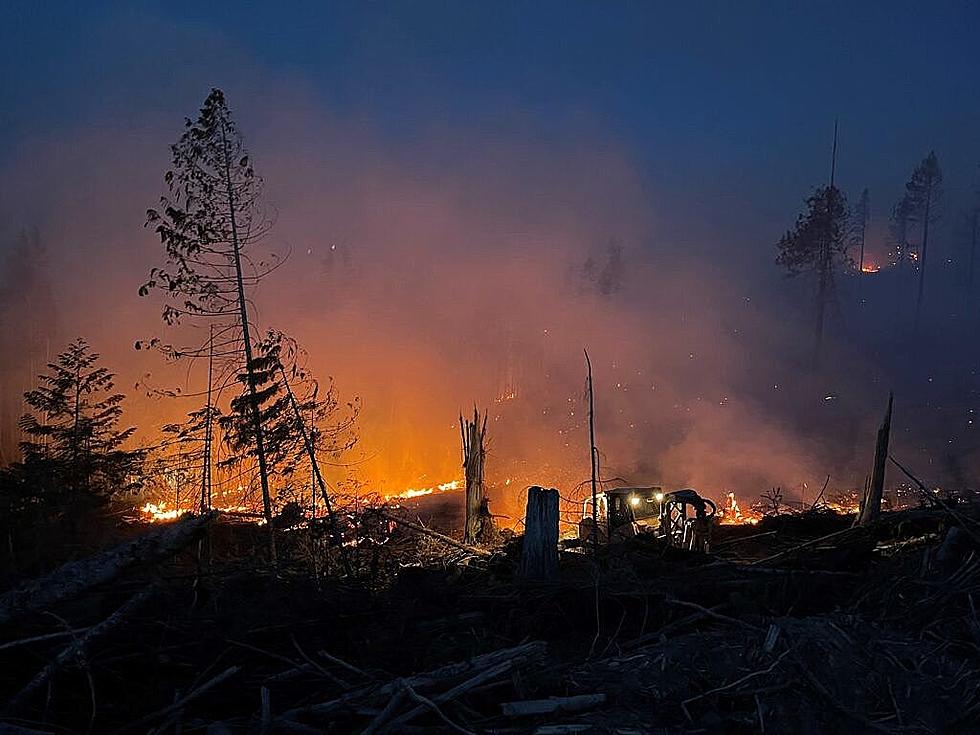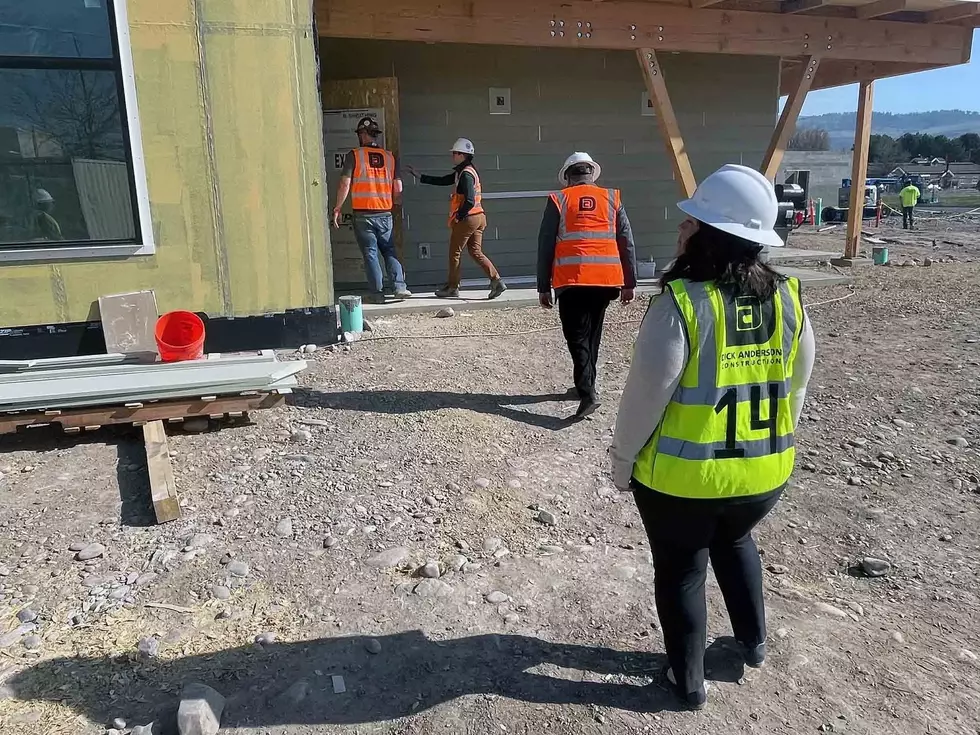
Montana researchers urge towns to focus on wildfire preparation
Laura Lundquist
(Missoula Current) For more than a decade, a small group of scientists have been trying to convince people that fireproofing their homes is far more effective than logging the forest when it comes to surviving wildfire. But few people are listening.
In mid-December, six researchers published a paper in the Proceedings of the National Academy of Sciences journal warning that communities across the nation, but particularly those in the West, aren’t prepared to survive an urban conflagration such as the one that devastated Lahaina, Hawaii, in August.
The paper, titled “Wildland-urban fire disasters aren’t actually a wildfire problem,” points out that, since 2016, communities from Lahaina to Gatlinburg, Tenn., that have lost hundred of homes to fires have certain things in common: the fires occurred under extreme weather conditions – high winds and persistent drought – and most of the structures weren’t fire-resistant.
“These problem fires were defined as an issue of wildfires that involved houses. In reality, they are urban fires initiated by wildfires. That’s an important distinction – and one that has big repercussions for how we prepare ourselves for future fires,” the authors wrote.
The authors included three researchers from the Forest Science and Fire Sciences laboratories of the U.S. Forest Service Rocky Mountain Research Station in Missoula and one from Headwaters Economics in Bozeman.
In a 2014 paper in the Proceedings of the National Academy of Science, some of the same authors developed a community risk assessment that put the focus on improving the security of individual homes in a community, not the forest around them.
The emphasis is placed on modifying the house and the home ignition zone, a region within 100 feet of a house where debris and vegetation should be eliminated or minimized to reduce the chance of fire getting close to the house.
The reason that urban conflagrations begin and spread is because wind pushes embers and heat from one unprotected building to another, overwhelming fire departments that normally train to fight fire in just one building. Conditions are made worse when buildings are close together, because radiant heat becomes a bigger factor, spreading fire quicker.
“Reducing the likelihood that a home will ignite interrupts the disaster sequence by enabling effective structure protection. New construction siting, design, construction materials, and landscaping requirements should take wildfire potential into account,” the authors wrote in the December paper.
One of the paper’s authors, Jack Cohen, is a fire-behavior analyst and heat transfer engineer who has spent 40 years investigating wildfires, particularly those that are linked to incidents where hundreds of homes burned. He has spent at least the past decade writing papers and giving talks about the need to focus on making homes less susceptible to wildfires, which are a natural process, especially in the arid West.
When asked why the researchers decided to submit the recent article that seeks to drum home points they already promoted a decade ago, Cohen said cities and agencies have done very little during that time period to put their recommendations into place.
“What prompted us this time was the Lahaina urban conflagration that was associated with a grassfire. It may be a repeated message on our part, but it’s not being received very well. Not much has changed,” Cohen said. “The federal and state agencies still don’t get it – they’re still defining the problem as a wildfire control problem.”
Each wildfire had very little connection to most of the burning buildings, Cohen said. A wildfire is the source of initial ignition, but from that point on, it’s a series of structure fires that lead to more structure fires. For example, with the Four Mile Canyon Fire in Boulder, Colo., the state of Colorado and the Forest Service had completed a number of fuel treatments nearby that they touted as protective. But high winds carried fire brands to ignite the houses far from the fire. Cohen found that while 168 houses burned, a lot of vegetation around the houses didn’t, “so the wildfire didn’t sweep through town.”
“In the past five years, a number of incidents with more than 100 houses burning have been initiated by grass fires, which burn quickly. The grass fires pass through and are gone while the community continued to burn,” Cohen said. “What I’ve found, particularly over the past five or six years, is that extreme wildfire is not dependent on closed-canopy conifers that produce big flames. The only time these urban disasters occur is under extreme conditions. That typically means it’s very windy.”
Nothing about the Lahaina Fire surprised Cohen. Not even the overblown claims that a wildfire “roared through and destroyed the town.” Again, the wildfire was over before the town really started to burn. The fire started as a grassfire fanned by high winds, and had Lahaina not been there, the fire would have burned through the buffel grass and guinea grass within a matter of minutes before it died out on the beach.
But Lahaina was there, a high-density community with several blocks of multi-story, largely-connected wooden structures. That configuration caused buildings to catch fire either due to burning embers flying from other buildings or from catching fire due to the overwhelming heat from nearby buildings.
“The ignition initiated where the grassfire came down, and that was it – it was a conflagration,” Cohen said. “You don’t want to be in a high-density community when you can’t control the fire. Thirteen of the 26 fatalities in the 1991 Oakland Hills Fire occurred in the street when two-story buildings were burning on both sides of the street and the road became blocked. The heat was untenable.”
“The home ignition zone works,” Cohen said. “The home ignition zone came out of the modeling I did and then the crown fire experiments I did with wood walls to show the distance, the proximity required to produce an ignition was realistic. At the same time, California was cutting 300-foot clearances around communities, which means nothing to (airborne) burning embers, but it’s way over (what’s required) for radiant heat exposure.”
Cohen and his colleagues hope their latest paper prompts more action from local governments. Cohen is hoping Missoula County can do a better job when it updates its Wildfire Protection Plan in the near future.
But more than likely, Cohen said, they’ll be writing a similar paper in another few years, trying to make politicians and the public understand. It doesn’t help that they’re fighting some in their own agency, the Forest Service, who insist that logging, not home modification, will save communities.
“Fire is inevitable. But nobody’s figuring it out,” Cohen said. “We’re starting from the presumption that it’s wildfire that spreads through a community that lays it to waste. We even have the agencies responding in that fashion by being obsessed with this notion of wildfire control. So they do fuel treatments to have safe firefighting. That’s not only counter ecologically, it doesn’t work.”
Contact reporter Laura Lundquist at lundquist@missoulacurrent.com.
Looking Back at One of Montana's Most Explosive Fires
Gallery Credit: Dennis Bragg
More From Newstalk KGVO 1290 AM & 98.3 FM









